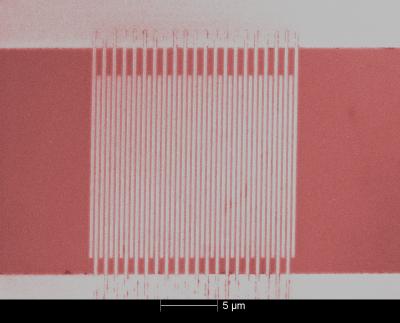The National Institute of Standards and Technology (NIST) scientists have replaced the superconducting material used in its single-photon detector with a new tungsten-silicon alloy, which increased the efficacy of the detector as well as its sensitivity to light with longer wavelengths.
With the new tungsten-silicon alloy, the ultrafast detectors can be used in experiments studying the nature of reality, systems and quantum communications and up-and-coming applications such as remote sensing.
The superconducting nanowire detector is one among the numerous sensors designed or utilized at the NIST to record single photons.
 Colorized micrograph of an ultrafast single-photon detector made of superconducting nanowires
Colorized micrograph of an ultrafast single-photon detector made of superconducting nanowires
The tungsten-silicon alloy model of the NIST has demonstrated an efficacy of 19-40% on a wide range of wavelengths between 1280 and 1650 nm, which includes spectrums utilized in telecommunications. The restrictions of the detector are primarily due to the absorption of imperfect photons and its efficacy could reach 100% by further design enhancements.
Superconducting nanowire detectors are ultra fast and can count roughly one billion photons per sec. They demonstrate minimum dark or false counts, function with a broad range of wavelengths, and generate strong signals, particularly at telecom wavelengths.
The production of long, narrow, high sensitivity nanowires from niobium nitride is difficult. The tungsten-silicon alloy’s higher energy sensitivity, which produces highly reliable signals, is the main reason for its selection by the NIST. The tungsten-silicon alloy allows a photon to break more electron pairs than niobium nitride. The internal structure of tungsten alloy is less granular and more uniform, producing the nanowires with high sensitivity.
With higher energy sensitivity, the nanowires made of tungsten-silicon alloy can have larger sizes of up to 150 nm width when compared to 100 nm or below for niobium nitride, resulting in the absorption of all photons effortlessly due to the expansion of functional areas of the detector.
The NIST researchers now try to increase the efficacy of tungsten alloy detectors by entrenching them in optical cavities that capture light for ultra high absorption. The ultra efficient nanowire detectors can be used in challenging applications, including linear optical quantum computing that encodes data in single photons.